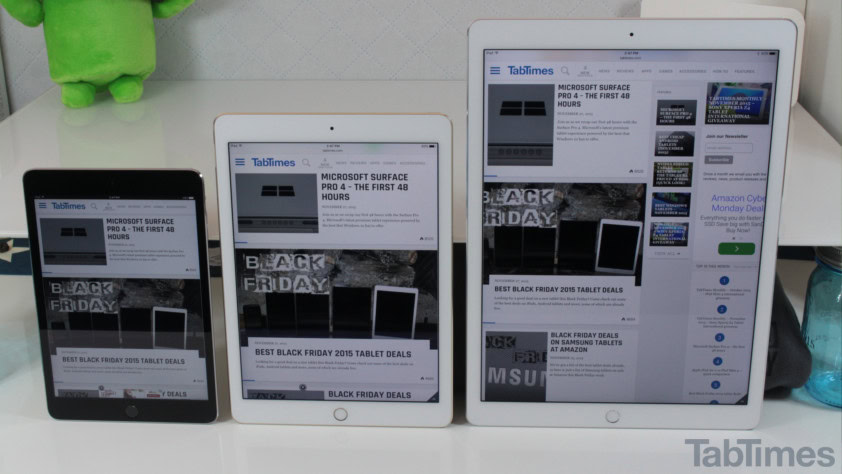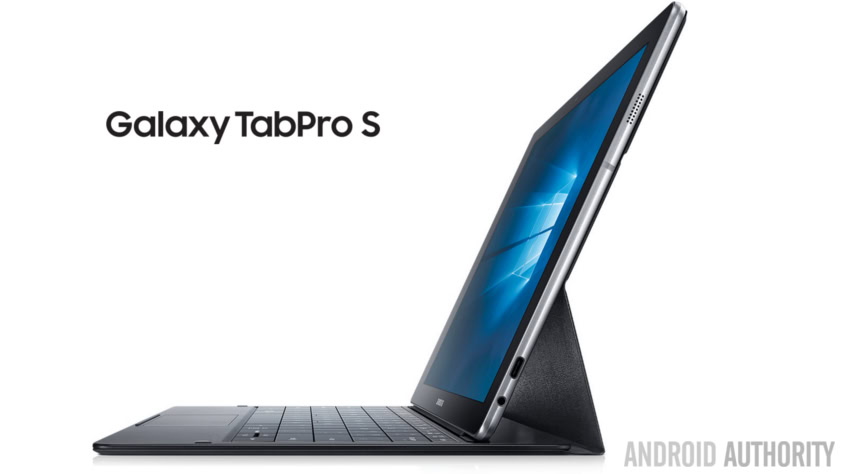Affiliate links on Android Authority may earn us a commission. Learn more.
Report: Q1 2016 worldwide tablet shipments decline 14.7% YoY
April 30, 2016

While the tech community may love to discuss what phone is the best or which tablet is terrible, most of the time it’s all a matter of opinion. Thanks to companies like the International Data Corporation (IDC), however, the collective community – and indeed the world-at-large – can be privy to data that explains just what everyone is actually doing.
A few days ago, IDC published the latest entry in its Worldwide Quarterly Tablet Tracker results, and the numbers are (1) bad in general, (2) bad for the established major players, and (3) good for some unlikely ones. Let’s get into the nitty-gritty.
For starters, citing both “first quarter seasonality” and “an overall disinterested customer base” IDC is reporting an “annual decline of 14.7% in worldwide tablet shipments” during Q1 2016. Worldwide shipments for all tablet variants, including slates and detachables, reached 39.6 million units.
Slate tablets comprised 87.6% of all shipments, however it was in decline and has “become synonymous with the low-end of the market.” Detachables, on the other hand, “experienced triple-digit year-over-year growth on shipments of more than 4.9 million units” which was impressively, “an all-time high in the first quarter of a calendar year.”

Mention was made to Microsoft’s Surface product line which arguably started the detachable trend, and it was also pointed out that this year even Samsung got in on the action. By this, of course, the report is referring to the curiously named Galaxy TabPro S, an sAMOLED-packing Windows tablet that comes with a detachable keyboard. It is the actions of companies like Samsung that are seeking to change the marketplace, as according to Jean Philippe Bouchard, Research Director of Tablets at IDC,
The introduction of detachables from traditional smartphone vendors is only beginning and pose a real threat to traditional PC manufacturers. Their understanding of the mobile ecosystem and the volume achieved on their smartphone product lines will allow them to aggressively compete for this new computing segment. It is likely that those smartphone vendors will utilize the detachable segment to create new mobile computing end-user experiences if customers are using their detachables in combination with their smartphones.
As for individual shipment breakdown, the results may be slightly surprising:
| Top Five Tablet Vendors, Shipments, Market Share, and Growth, First Quarter 2016 (Preliminary Results, Shipments in millions) | |||||
| Vendor | 1Q16 Unit Shipments | 1Q16 Market Share | 1Q15 Unit Shipments | 1Q15 Market Share | Year-Over-Year Growth |
| 1. Apple | 10.3 | 25.9% | 12.6 | 27.2% | -18.8% |
| 2. Samsung | 6.0 | 15.2% | 8.3 | 18.0% | -28.1% |
| 3. Amazon.com | 2.2 | 5.7% | 0.0 | 0.1% | 5421.7% |
| 4. Lenovo | 2.2 | 5.5% | 2.5 | 5.4% | -13.8% |
| 5. HUAWEI | 2.1 | 5.2% | 1.1 | 2.4% | 82.2% |
| Others | 16.9 | 42.6% | 21.8 | 46.9% | -22.5% |
| Total | 39.6 | 100.0% | 46.4 | 100.0% | -14.7% |
| Source: IDC Worldwide Quarterly Tablet Tracker, April 28, 2016 | |||||
As indicated by the above results, both Apple and Samsung saw a significant decline on YoY growth. Of the two, Apple arguably fared less badly due to the fact that it has the benefit of the iPad Pro and the new size-factor category it fits into. Special mention is made to the price drop of the iPad Air 2 which may trigger some with older Apple tablets to finally upgrade. Apple continues to be the industry leader with respect to global shipments.
Samsung on the other hand, had no new tablets to offer save for the aforementioned Windows-running Galaxy TabPro S, which IDC mentions has not achieved stunning results due to the high price point. It also speculates Samsung will soon diversify said product line to offer more selection and price points.
On the other hand, Amazon has fared fantastically with an sensational 5421.7% increase YoY. This is no doubt a result of the company’s bargain-bin pricing strategy employed with last fall’s refresh and has helped the company earn a venerable fortune. HUAWEI also saw considerable growth, with mention made as to the company’s frequent collaborations with telecom carriers.
Much like Samsung and Apple, Lenovo saw a decrease in shipments YoY, suggesting its Yoga 3 series of Android tablets has not performed that well. IDC also described a somewhat incomplete range of Windows tablets that needs to be fleshed out to ensure maximum customer spending.
Wrap Up

Overall the tablet market continues to decline as market saturation seems to have hit not only Android, but Apple’s ecosystem as well. Indeed many have accused the iPad Pro – the larger one – with being a false equivalency: while its maker wants customers to believe it is a replacement for a home PC due to its size and abilities, the fact that it lacks a user-accessible file system and can not run OSX software means its functionality is explicitly limited for an entire segment of the market, something that is only worsened by the product’s high price.
It remains to be seen as to what Samsung releases this year and how it performs. Lenovo, too, needs to get on the ball less it run the risk of shedding more market share. Meanwhile, Amazon and HUAWEI are clearly on the right path, at least for the time being.
What do you think? Are you still ga-ga over tablets, or has the whole market just lost appeal for you?